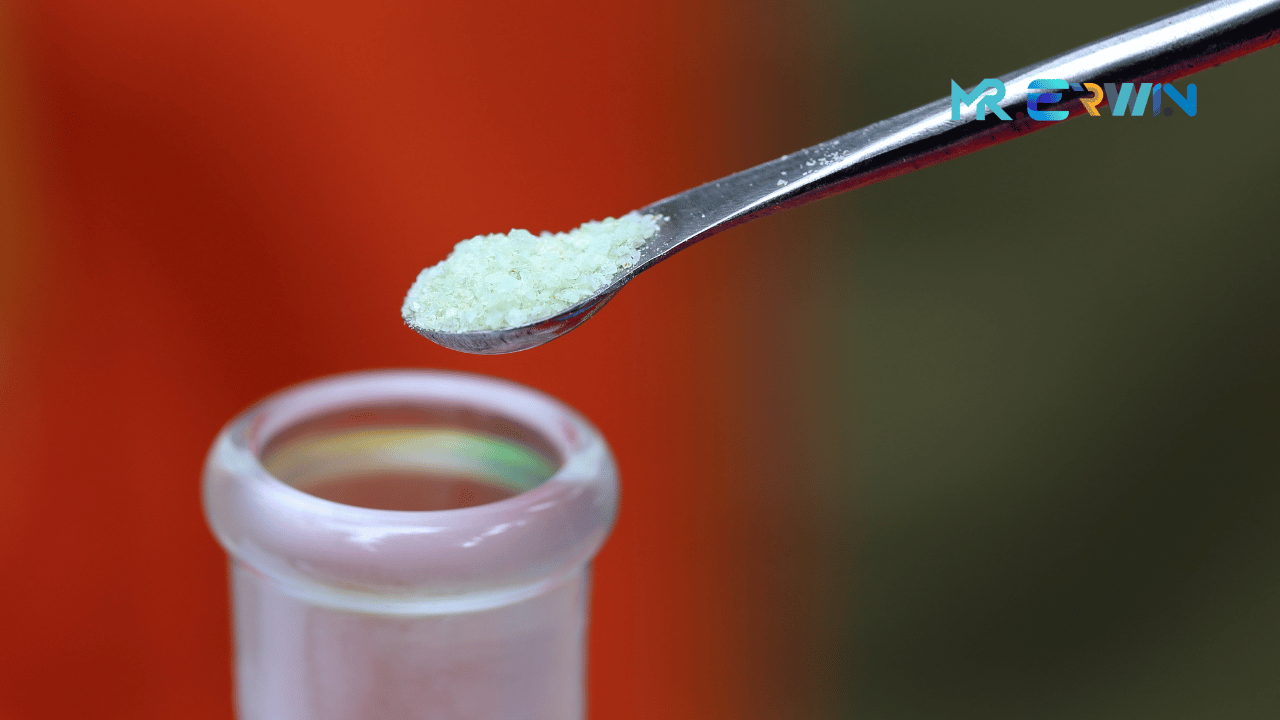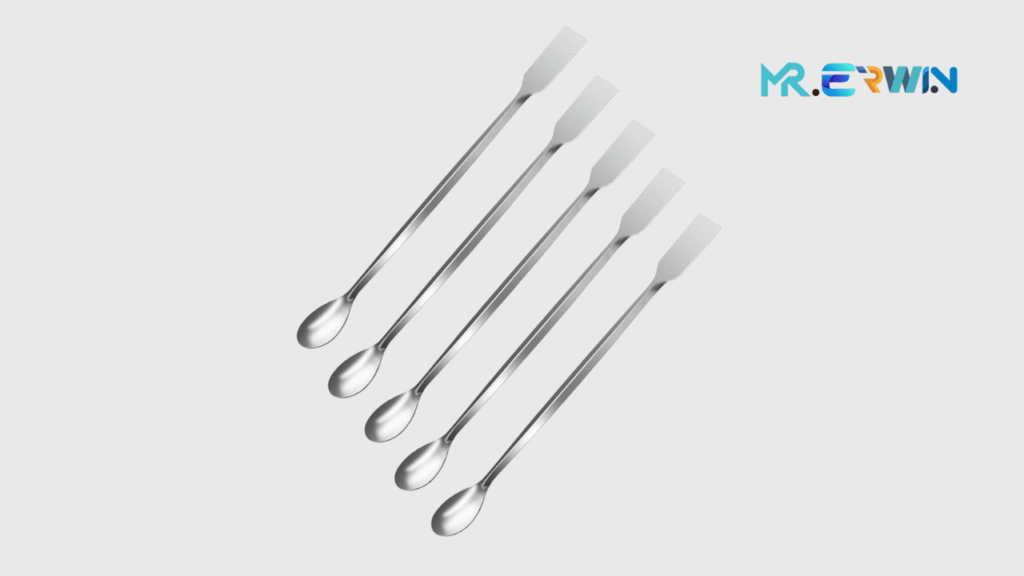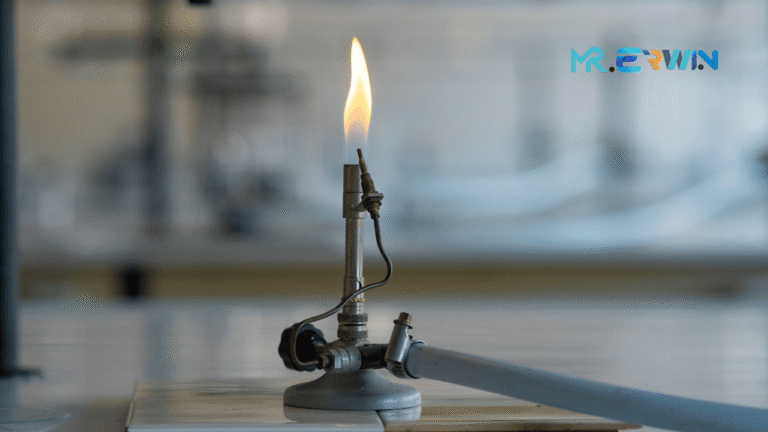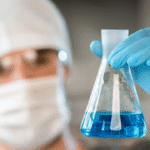
Laboratory Spatula: Definition, History, Types, and Uses
Definition of a Laboratory Spatula
A laboratory spatula is a small, handheld tool used in laboratories to handle, transfer, or mix small quantities of solid, semi-solid, or powdered substances. Unlike kitchen spatulas, laboratory versions are designed to be chemically resistant, easy to clean, and precise, making them ideal for handling chemicals, reagents, or biological samples without contamination.

In short: it’s a precise, chemical-safe scoop designed for lab work.
A Brief History of the Laboratory Spatula
The laboratory spatula has evolved over centuries, with its origins tracing back to simple metal or wooden tools used by early chemists and apothecaries.
- Ancient roots: Early pharmacists used flat sticks or spoons for measuring herbs and minerals.
- 19th century: With the rise of modern chemistry, metal spatulas became common in laboratories, often made of stainless steel for durability.
- 20th century onward: The introduction of plastics like PTFE (Teflon) and polypropylene brought lightweight, non-reactive spatulas into common use.
Today, laboratory spatulas are available in multiple materials and designs to fit specific scientific needs.
Common Types of Laboratory Spatulas
Different experiments require different spatula designs. The most common types include:
1. Double-Ended Spatula
Features two functional ends, often with different shapes—such as one flat blade for scraping and one spoon-shaped end for scooping.
Best for: Versatile use in general lab work.
2. Micro Spatula
A smaller, narrow-bladed spatula designed for precise handling of tiny amounts of material.
Best for: Analytical chemistry and micro-scale experiments.
3. Spoon Spatula
Has a spoon-like end for scooping powders and granules.
Best for: Handling crystalline or granular solids.
4. Flat-Blade Spatula
A straight, flat edge for spreading, scraping, or lifting substances.
Best for: Applying substances to slides or containers.
5. Disposable Plastic Spatula
Made from inexpensive, chemical-resistant plastic for single-use applications.
Best for: Sterile environments and avoiding cross-contamination.
6. Specialty Spatulas
Includes angled, flexible, or PTFE-coated versions for use with reactive chemicals.
Best for: Handling corrosive or sticky materials.
Materials Used in Laboratory Spatulas
The choice of material affects durability, safety, and compatibility with substances:
- Stainless Steel: Durable, corrosion-resistant, and easy to sterilize.
- Nickel: Resistant to certain chemical reactions but less common today.
- Polypropylene: Lightweight, inexpensive, and chemically resistant.
- PTFE (Teflon): Highly resistant to corrosive chemicals and easy to clean.
- Wood (historical): Rarely used today due to contamination risks.
Main Uses of a Laboratory Spatula
Laboratory spatulas are multi-purpose tools in scientific work. Common uses include:
- Transferring Solids
Moving powders or granules from containers to weighing boats or reaction vessels. - Measuring Small Quantities
Taking precise amounts of a reagent for experiments. - Mixing or Stirring
Combining small amounts of substances in test tubes or small containers. - Scraping Residues
Removing material from beakers, flasks, or crucibles without damaging the surface. - Applying Substances
Placing pastes, gels, or powders onto microscope slides or sample holders.
Proper Care and Maintenance
Maintaining a laboratory spatula ensures safety and accuracy:
- Clean immediately after use to prevent cross-contamination.
- Avoid abrasive cleaners that can damage surfaces.
- Sterilize when working with biological samples.
- Store properly in a clean, dry place to prevent rust or damage.
Safety Considerations
While spatulas seem simple, they are still laboratory tools:
- Wear gloves when handling hazardous materials.
- Avoid direct contact with chemicals.
- Do not reuse disposable spatulas to prevent contamination.
- Check material compatibility before use with strong acids, bases, or solvents.
Modern Innovations in Laboratory Spatulas
Recent developments have made spatulas more efficient:
- Antimicrobial coatings for microbiology labs.
- Ergonomic handles for comfort during repetitive use.
- Autoclavable plastics for sterile work environments.
- Integrated measuring marks to estimate small volumes.
Summary Table: Laboratory Spatula at a Glance
| Feature | Details |
|---|---|
| Purpose | Transfer, measure, mix, scrape substances in labs |
| Common Materials | Stainless steel, polypropylene, PTFE |
| Main Types | Double-ended, micro, spoon, flat-blade, disposable |
| Typical Uses | Handling solids, applying samples, scraping residues |
| Key Advantage | Precision and chemical resistance |
Final Thoughts
The laboratory spatula may be a simple tool, but its role in science is essential. From transferring tiny amounts of powder to working with reactive chemicals, its design ensures accuracy, safety, and efficiency. Whether stainless steel for durability or PTFE for chemical resistance, the right spatula can make a big difference in the quality of laboratory work.
FAQ Laboratory Spatula
What is a laboratory spatula used for?
A laboratory spatula is used to transfer, measure, mix, and scrape small amounts of solid or semi-solid substances in scientific experiments. It ensures accuracy and prevents contamination.
What are the types of laboratory spatulas?
Common types include double-ended, micro, spoon, flat-blade, disposable plastic, and specialty spatulas designed for specific chemicals or applications.
Why is stainless steel used for lab spatulas?
Stainless steel is durable, corrosion-resistant, and easy to sterilize, making it ideal for repeated use in chemical and biological laboratories.
Can laboratory spatulas be sterilized?
Yes. Stainless steel and certain plastics like polypropylene and PTFE can be sterilized using an autoclave or chemical disinfectants.
What is the difference between a lab spatula and a kitchen spatula?
A lab spatula is smaller, made of chemically resistant materials, and designed for precision, while a kitchen spatula is larger and made for cooking or baking.









